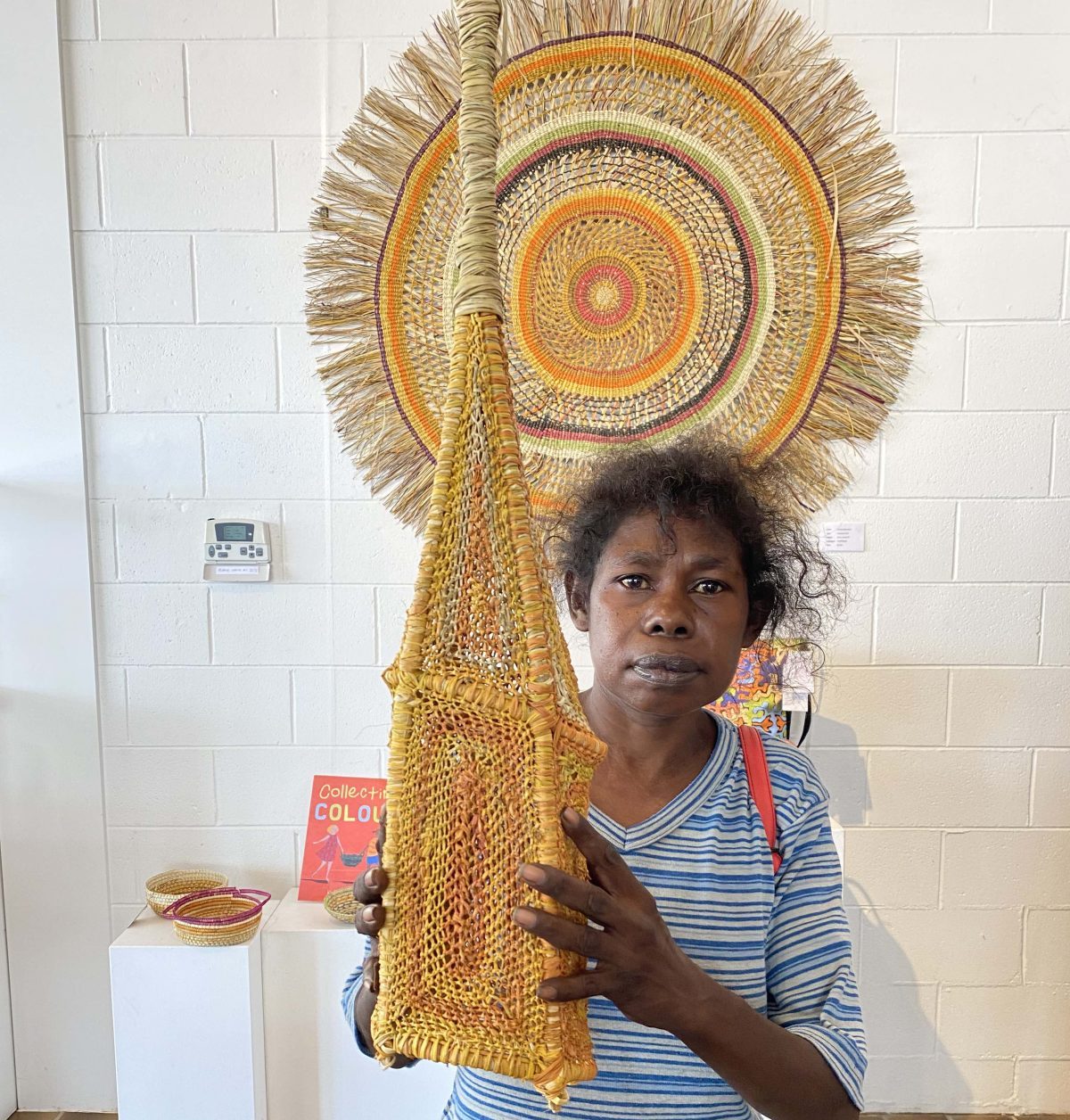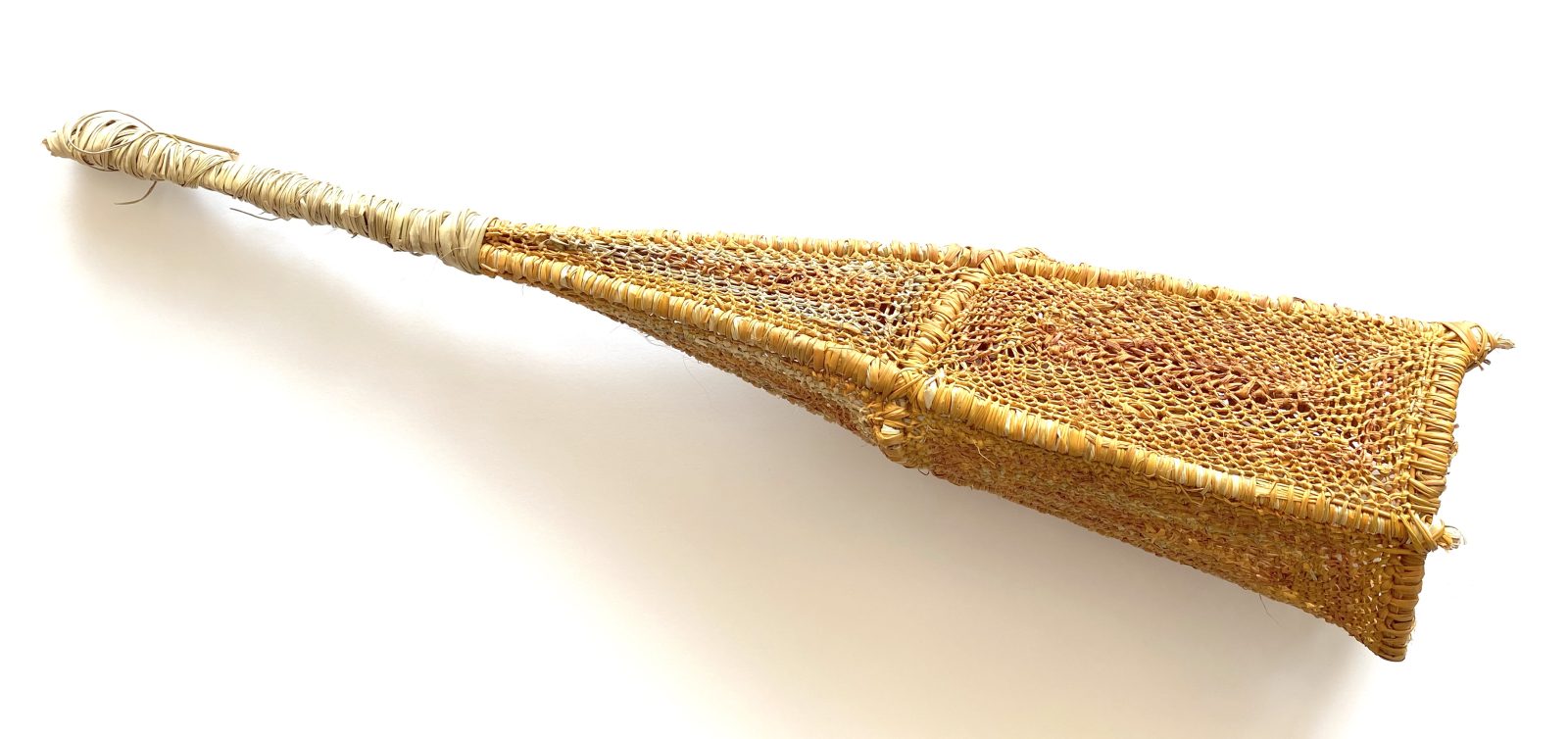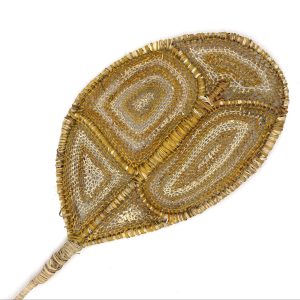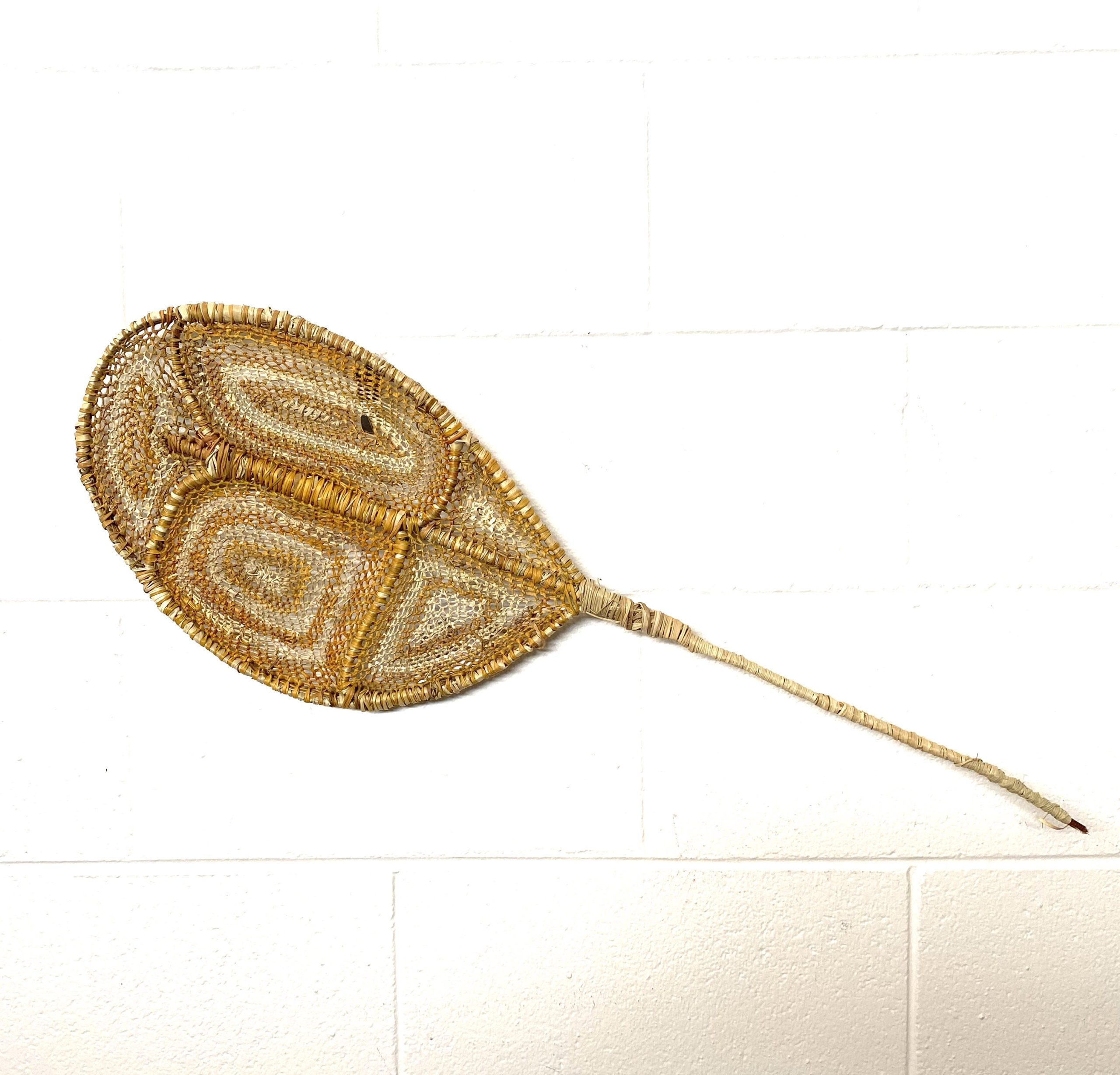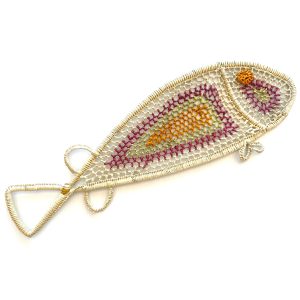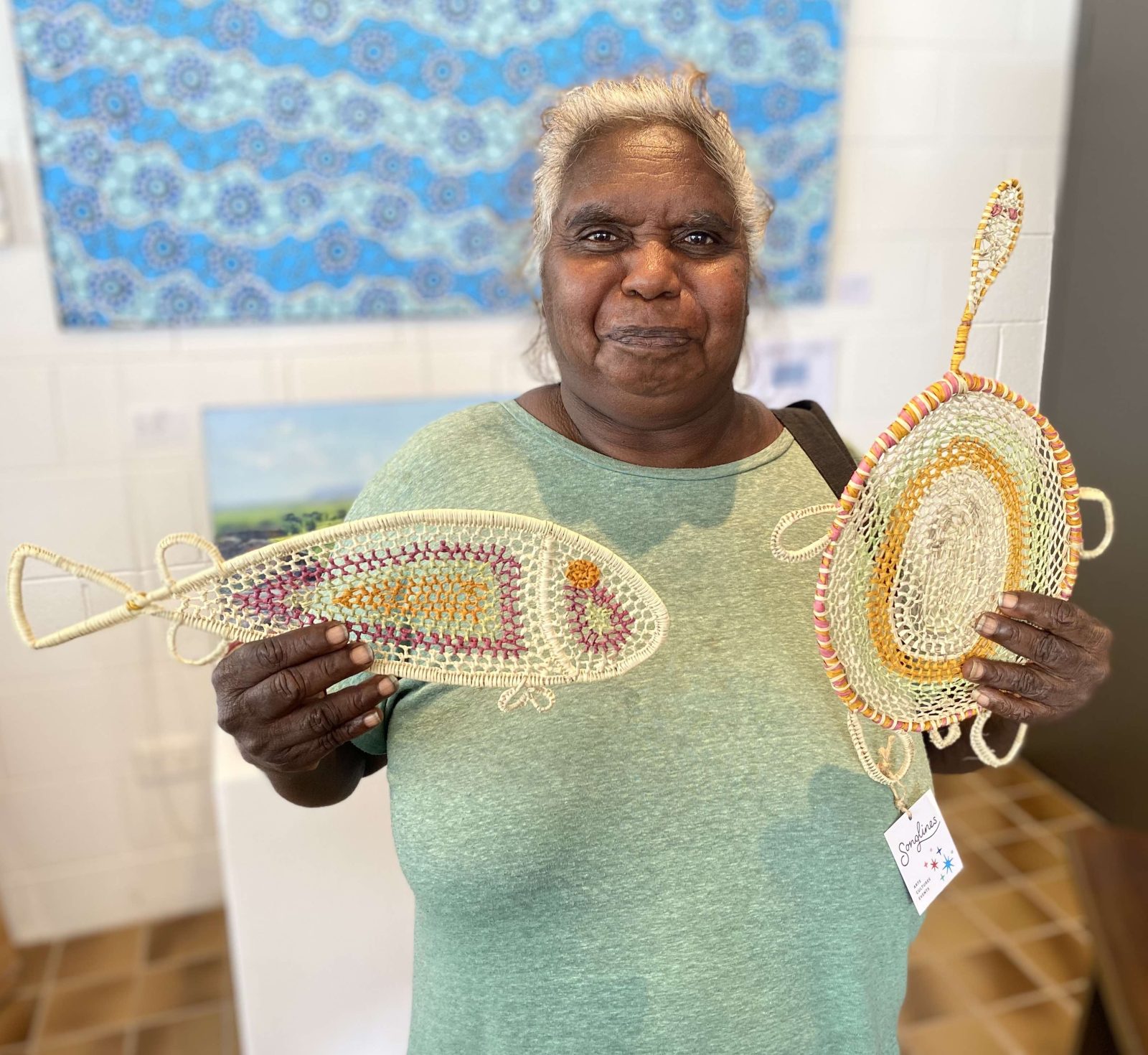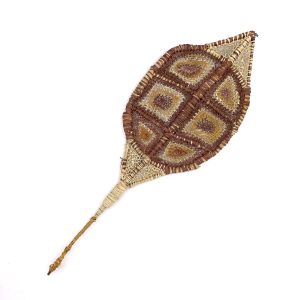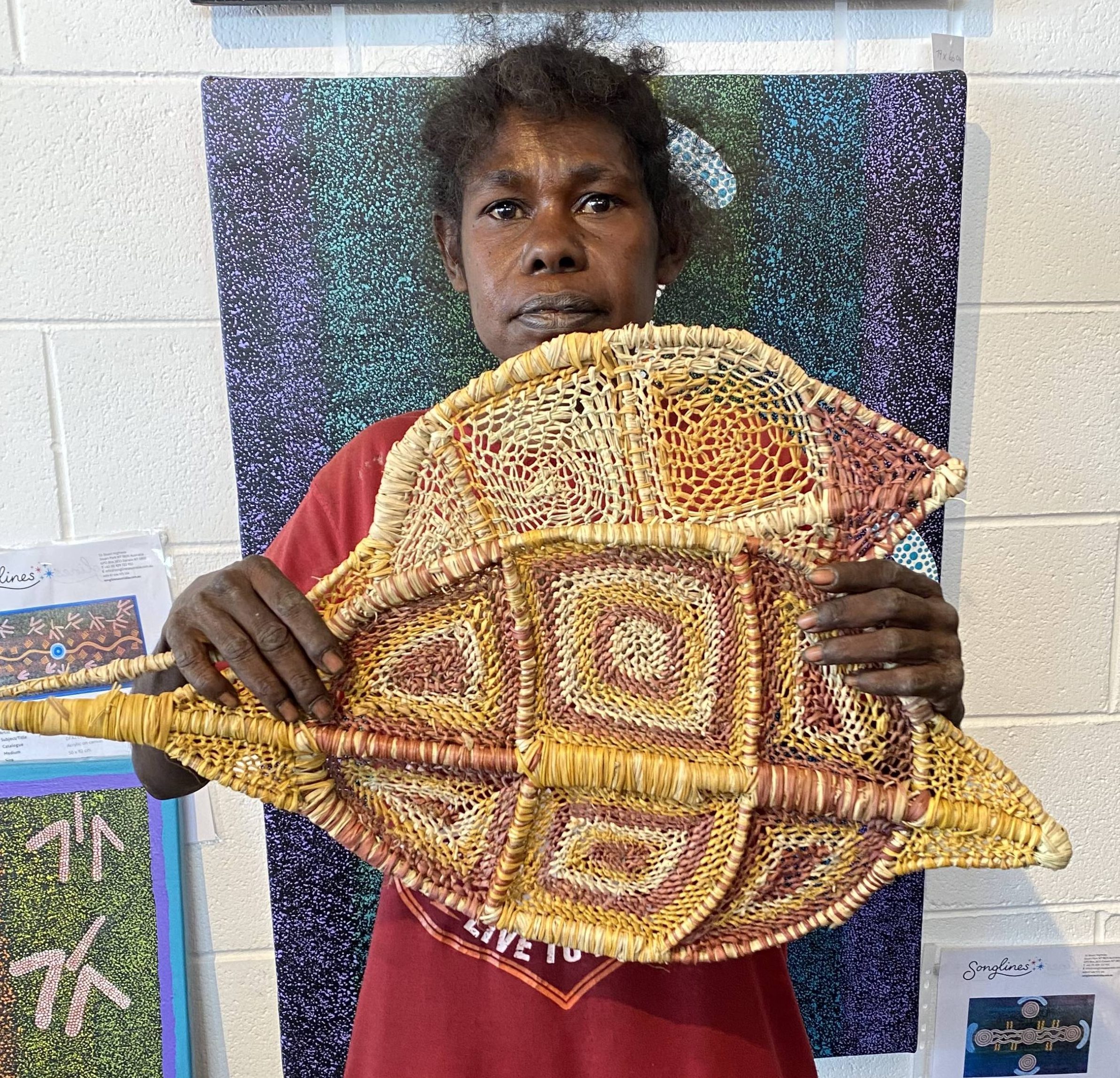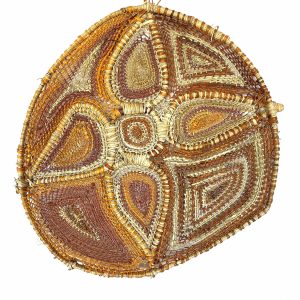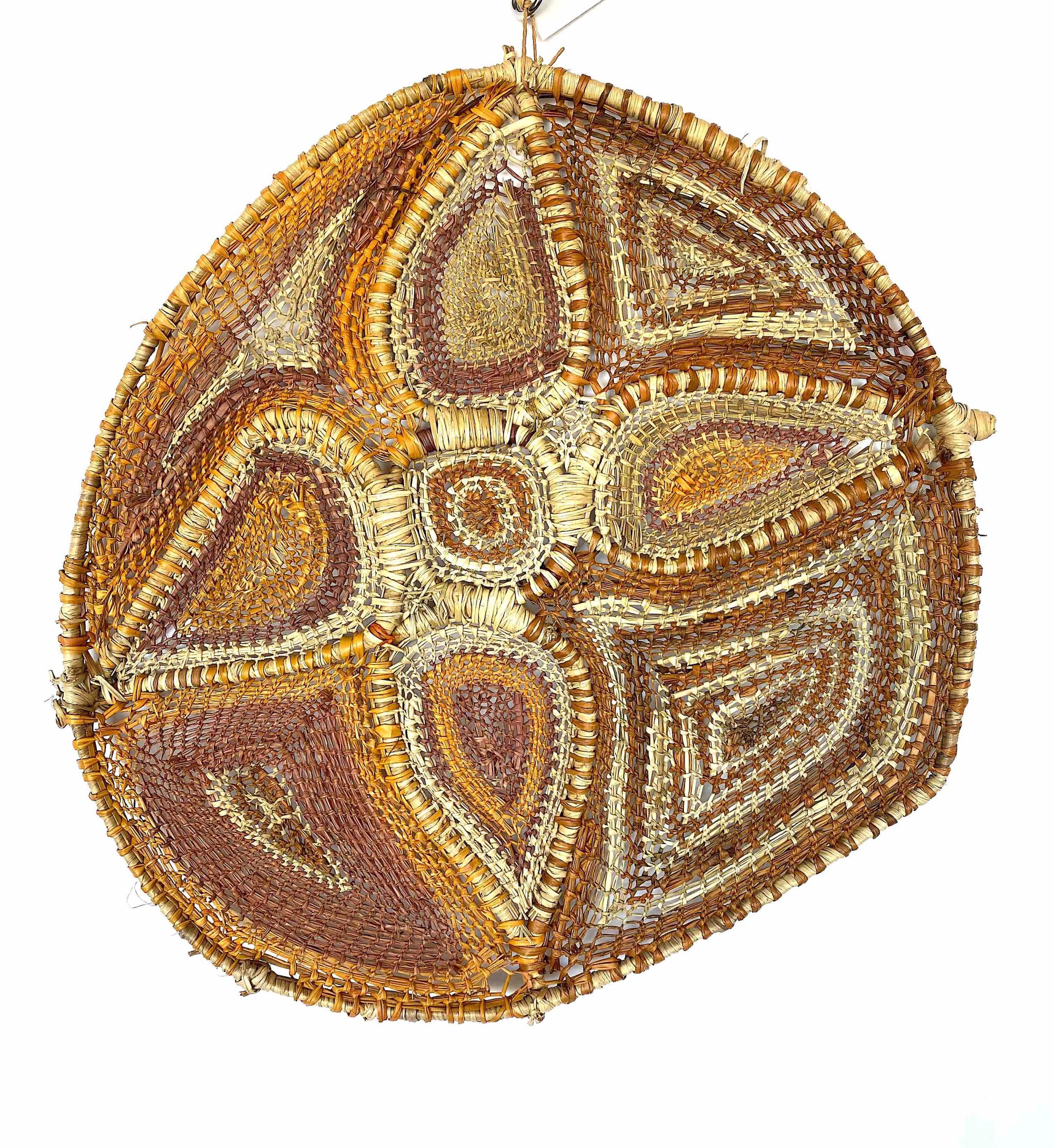Description
Irene Nagalinba is a Kuninjku painter born in 1979. She is the daughter of Jimmy Njiminjuma (1945 -2004), an artist vital to the founding of the contemporary Kuninjku painting movement.
Ngalinba’s work was first exhibited in 2003. Her first solo exhibition was at William Mora Gallery in 2006. In 2007, she was selected for the Xstrata Coal Emerging Artist Award held at the Queensland Art Gallery.
Ngalinba has shown at numerous commercial galleries including Outstation in Darwin, Gabrielle Pizzi in Melbourne and Annandale in Sydney. Her work is held in many collections nationally including that of Artbank, Museum and Art Gallery of the Northern Territory and Ballarat Fine Art Gallery.
About Pandanus weaving
Contemporary Arnhem Land weavers are renowned for their beautifully executed Pandanus weavings and use of local dyes to create a wide palette of colours. Only women collect and process Pandanus.
Collecting is the first part of the process. Only the new growth (erect shoots emerging from the top of the tree) is used and the ladies use a ‘hook stick’ to harvest as they are usually high in the area. It requires strength, skill and knowledge of which trees/places yield the best source. Pandanus grows best in areas that experience seasonal dampness or are near watercourses. The ladies may have walk long distances to find the right grove and then carry their haul back. Harvesting is easiest in the wet season when Pandanus trees everywhere produce new growth.
Stripping
There are a few steps to stripping Pandanus and it is surprisingly difficult to do. An experienced person makes it look easy! On either side of the leaf are thorns/barbs running in the opposite direction to the stripping action and these need to be avoided. A portion of the leaf is stripped from the top to the base to yield a long piece of moist fibre. Then the outer edges (with barbs) are removed and the remaining fibre is also retained. Each leaf yields two lengths of slightly different thickness and quality. These are then put aside to dry or be dyed.
Dyeing
This is almost always done over an open fire in large pots. Colours may be roots, berries, flowers or, in the case of green, a part of the Pandanus plant. Some of the dyes are seasonal and/or very location specific. Things may be added to the dye mix to strengthen and change colours, such as ash. The weavers take great care and pride in creating vivid colours and often will trade dyes and additives. The usual time to dye is immediately after the Pandanus has been stripped.
Weaving
A range of traditional, borrowed and innovated weaving techniques are used in contemporary Pandanus weavings. Larger sculptures are made with a jungle cane structure and infilled with lace like weaving. Smaller sculptures use Pandanus fibre for the framework as well.

